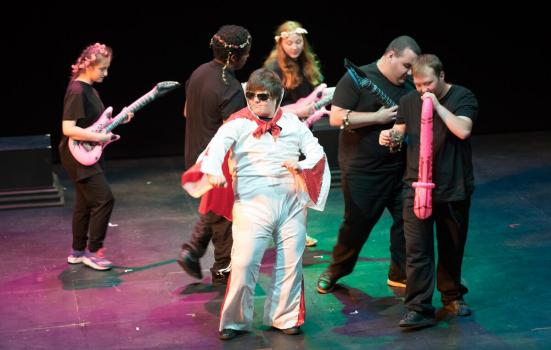A cultural education programme in the north west has shifted its focus from pupils to teachers and is seeing great results. Sarah Bailey explains how.

My colleagues developed the Specialist Leaders in Cultural Education (SLiCE) programme in 2013, in response to changes in education. They knew how passionate many teachers were about cultural education and wanted to support them to thrive.
Creating inspiring experiences is the heartbeat of what we do at Curious Minds, but we knew that we needed to create a systems-based approach in order to reach more children.
SLiCE is a teacher development programme running in the north west of England. SLiCE Fellows are experienced teachers who work with cultural organisations to uncover new ways of working.
They lead the development of cultural education partnerships across a Teaching School Alliance. As highly credible experts, they are helping us to ensure that young people access the very best cultural education, whoever and wherever they are.
A growing programme
“When I went back to school I ripped up my old schemes of work and started again”
Between 2013 and 2015, we inducted 29 teachers into the SLiCE role covering primary, secondary and special education. We are working with even more teachers this year and their passion and commitment is overwhelming. The programme includes partners from theatres, galleries, museums and libraries.
Since our last article in AP, we’ve reached two important milestones: we’ve commissioned a full evaluation by Dr Sandra Hiett, and SLiCE was noted in the recent Culture White Paper.
Hiett’s report identified that SLiCE transforms practice in cultural education. In schools this has meant moving from creating projects for children to developing staff and the curriculum. In cultural organisations, staff have become more responsive to school needs and have moved away from a static approach.
Cultural education in practice
To give you an insight into how SLiCE works, here is an example of what happens in practice.
One of our fellows wanted to explore how working with cultural organisations could improve literacy across their alliance of 15 schools. They chose to work with a gallery and a theatre, and focused on continuing professional development (CPD) for teachers. They included specialists in English and French at primary and secondary schools.
Their process started simply with a CPD day hosted by each cultural partner for a group of teachers. Schemes of work were created to mainstream the practice that was created. The change in schools was swift. Despite the majority of teaching participants not being engaged in arts and culture, by the end all of them were, and two had organised new class visits.
One teacher remarked: “When I went back to school I ripped up my old schemes of work and started again. The project has had a huge impact upon my teaching, but especially on my year 9 boys – their writing has never been so good.”
Participating teachers suggested there had been improved teaching and learning across English and French, and visible improvement in the writing produced by pupils.
On the other side of the collaboration, the cultural professionals report similarly important changes for them. One theatre has created a tailored programme for primary and secondary teachers and has since sold out training sessions linked to productions.
A participating gallery created new resources and the activities they developed have been integrated into the postgraduate programmes of a partner university.
The education sector is equally passionate on the ground: one SLiCE school has been nominated for Creative School of the Year by the Times Education Supplement.
Looking forward
We welcome the observation made in the Culture White Paper that: “Culture should be an essential part of every child’s education, both in and out of school.”
SLiCE has been recognised as a way of contributing to this focus, alongside other important programmes such as Artsmark, music education hubs and heritage schools. We’ll continue working on programmes like SLiCE, building partnerships across sectors as we go.
At Curious Minds we know we are not alone in being ambitious about cultural education. Our Chief Executive, Derri Burdon, is clear that partnerships are crucial to our success: “We are inspired by the work happening internationally, for example, in Australia and Brazil, and we are speaking to colleagues about how we can share best practice. We are experienced practitioners, but we all need to be ready to learn and improve if we are to ensure cultural education is the best that it can be.”
SLiCE has taken on an even bigger challenge in education this year. Linked to the Pupil Premium initiative, we are now focusing explicitly on how fellows work with cultural professionals to close the gap between disadvantaged pupils and their peers. We hope to be able share the evaluation on this development later this year.
Sarah Bailey is Director of Development and Communication at Curious Minds.
www.curiousminds.org.uk
Tw @sarahlearns




